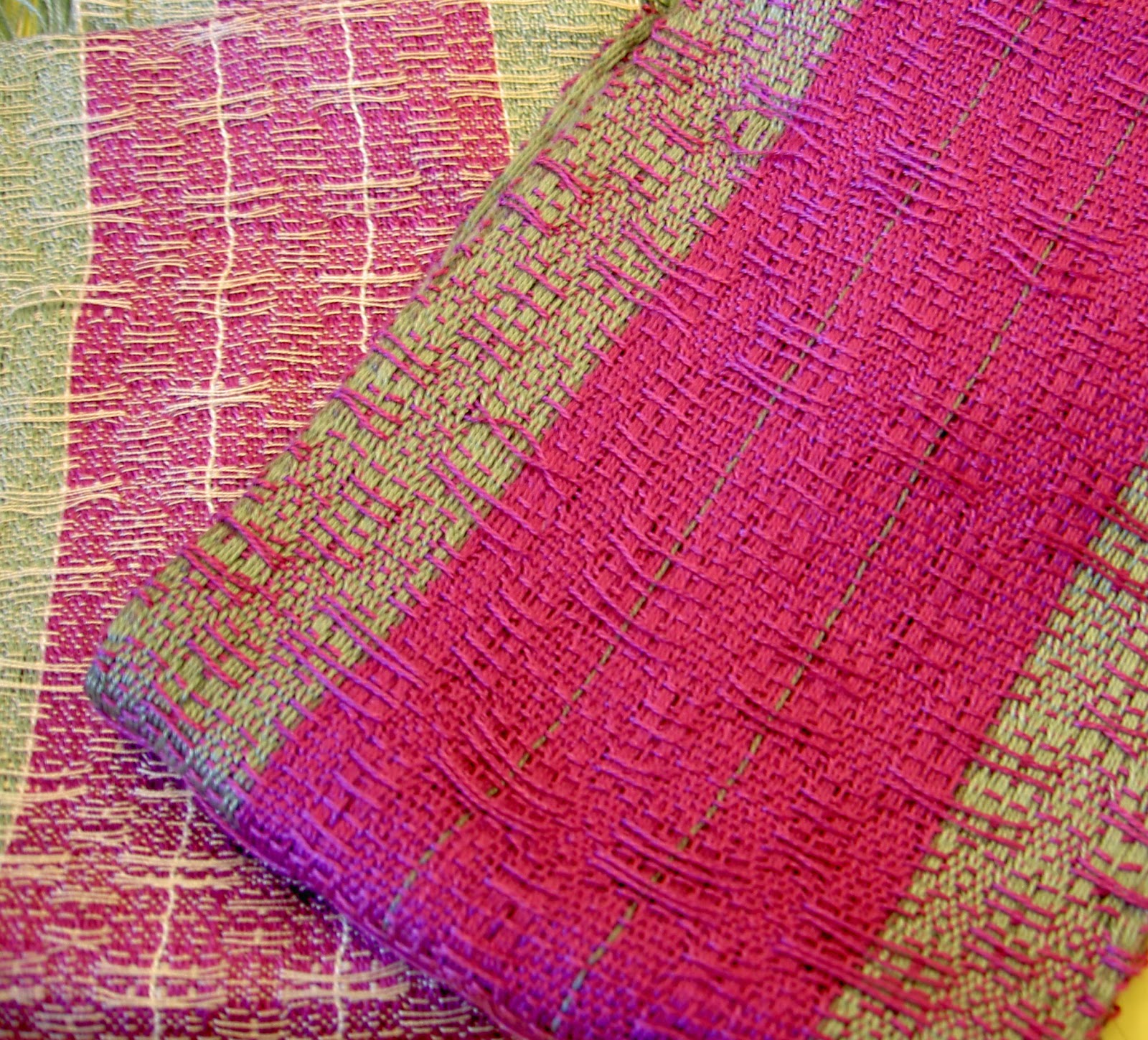Christine Shipley, Theo Moorman scarf, based on my design in Handwoven Summer 2013. Christine tried the tie up and treadling that Handwoven had changed from my own original plan and she found it worked out fine, much to our relief.
A new term of weaving classes has begun, and the first
thing that struck was how happy and enthusiastic as well as loud and boisterous students have
been in the class, communicated by the volume at which they spoke, at times
making it difficult for me to be heard and to teach. I wondered if I was a good
teacher at this point, thinking that I had lost complete control over my class!
LOL! So questioning my own competency I started reading some research about
creating good learning environments and I came upon “Constructivist Learning
Environments” by Brent G. Wilson and what I learned is that this is all a very good sign!
Christine Shipley, clasp weave scarf with chenille and tencel.
I was
very relieved to hear what he had to say and what he considered to be good
learning environments . The role of the teacher
in his view is one where lerning is fostered and
supported, but not controlled or dictated in any strict fashion. He talks about the difference between ‘instructional
environments’ and ‘learning environments’. ... a learning
environment is one in which learning is
fostered and supported, as opposed to an instructional environment, that is a
more controlled and directive of the students activities and interactions. To someone observing the class, a ‘learning environment’ appears chaotic (which it certainly does in our class!),
however this only indicates that the environment is dynamic, responsive and vibrant. This approach sees the
student taking more initiative in their learning and leaving the teacher to
take a back seat, perhaps guiding, advising and encouraging rather than being directive. The teacher is responsive to each individual
student as they work at their own rhythm and decide individually what direction
they want to take and what kind of challenges they are ready to take on.
Louise Granahan, houndstooth scarf in bamboo (rayon). Louise takes all her design ideas from the beginner sampler she did with us.
The idea of creating a ‘learning community’ is definitely
what is happening in our classroom at the Toronto Weaving School, where
students are eager to help each other on projects and inspire others with the
projects they have done. The students support each others learning
constantly...it’s a real environment of cooperation and caring. Thus creating a good ‘learning environment’
is one in which learners have at their disposal the tools, equipment, and
resources that are complemented by the impact other people in the learning
environment have upon each other. So I guess I am now convinced that I have intuitively created an optimum learning environment for weaving, thanks to you and your lively participation. In all of this I only ask that you not forget and include the newcomers to the class .....
Marion Kirkwood. Atwater Bronson Lace Scarves adapted from Handwoven Mar/April 2008, p 54-56 8 shaft pattern. Tencel (rayon).
I featured Nieves Carresco last week and she wrote to me this week and said:
"Good morning Line, a quick note to let you know that we went to see the textile show on Gerrard a couple of days ago with Pascal. I immediately recognized your pieces! My favourite is "Around in Circles", with the loose and apparently random positioning of these yarns but obviously following some sort of structure. Your colour palette is very appealing, refreshing, optimistic. A really delightful piece. I also liked the fine grid of the background. I saw your blog also, thank you for including me! About Jun Tomita, you made the same mistake I made .... Jun is a man (not a woman), and actually his wife is also an artist, I believe, but I'm not sure what her role is in his studio (as you can see from the web page, almost all is in Japanese!)"You sent me:
Scott Ford thought that this would be of interest to weavers: http://www.leevalley.com/en/newsletters/Gardening/8/9/Letter.htm
Louise Granahan (sorry....info lost on this scarf).






















